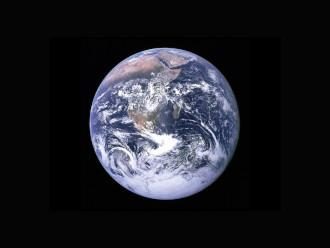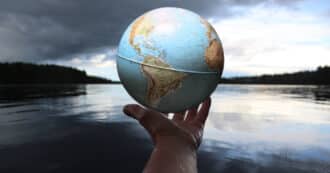By Ilana Stein – We are excited as we approach October 31st when the 2021 Climate Change Conference (COP26) starts in Glasgow. Today, we hear the term “climate change” or “global warming” everywhere. And as the summer temperatures soared, many could be heard saying, “You see, it’s climate change!” But is it? First we have to understand what climate is, what usually affects it, and what new factors affecting climate have come into play to influence it.
One of the reasons that working out this system is so complex is that there are multiple factors affecting climate – and climate can be analyzed locally or globally. What is the difference between the two?
Global Climate
The Earth’s atmosphere, ocean currents, weather and climate are part of a complex dynamic that we as a species are continually attempting to understand. Attempts to model the fluid dynamics of the weather, air, water, clouds, pressure, latitude, sunlight and chemicals in earth’s miraculous life-giving bubble of breathable, cosmic-ray-protecting atmosphere, has driven our creation of technology – including computers themselves.
Local Climate
Local climate is also called “the climate of a place” and can be looked at through many lenses. Climatologists study the overall pattern of experienced and measurable conditions in that place’s unique location. Salient aspects that they track include surface and air temperatures and seasonal fluctuations and volatility, prevailing winds, precipitation including rainfall, snow, fog, and storms, groundwater and aridity, ocean currents, river flows, flooding patterns, and many other phenomena – these all make up the aggregate climate of a place.
The Difference between Weather and Climate?
The difference between the two is in essence about time.
Weather is a short-term view that takes into account observations of temperature, precipitation, wind, air pressure changes and moisture in the air – or humidity. It looks at what the conditions will be in a few minutes, tomorrow or over the next few days.
Climate, on the other hand, looks at patterns of weather over the long term – at least 30 years or more. Here the patterns of the past must be examined to see trends or regular changes in such factors as wind cycles, temperatures of the ocean, rainfall in the Pacific that causes a change in the Atlantic. These are gathered together to create a bigger, global picture – called global climate models.
Natural Factors Affecting Climate
There are a number of factors to take into account when we try to understand the climate. Here are a few:
The Affect of Location
Thanks to the axis at which the Earth is tilted, the particular latitude on which climate is being measured makes a difference. For example, at the Equator the sun’s rays and solar radiation are directly angled at the surface of the earth. At the poles, the sun’s rays are oblique or slanted, so that the rays’ energy is spread out more and less intense.
Latitude also means that the amount of daylight hours varies at different parts of the planet. At the north and south poles of the Arctic and Antarctic regions the difference is largest, with almost continuous day during summer and continuous night in winter in those regions.
Elevation, or the altitude, also makes a difference. The higher one goes – on a mountain range for example – the cooler the air. The plants that grow at this altitude will be different to those in the warmer climes of the valleys or closer to sea level.
Wind depends on warm air rising and then cooling, which causes the air to circulate in a specific direction. Prevailing winds are air masses that circulate in the same direction all the time. There are six main prevailing winds – three in the northern hemisphere and three in the southern hemisphere. These affect not just temperature but importantly rainfall as well.
The Earth’s Surface Affects Climate
Where the earth’s surface is covered with trees and other types of plants, the heat of the sun is absorbed better, while ice and snow reflect the heat back out. Oceans, which cover much of the earth’s surface, are slower at absorbing and releasing heat, helping to regulate temperatures across the planet.
Ocean currents are powerful forces in creating climate. Currents carry warm or cool water for thousands of miles, which in turn change the temperature of the air above the water. The movement of air is also affected based on whether it is moving over water or land. Over water, the air masses are cooler – so coastal areas tend to have cool breezes as well.
Human Factors Affecting The Climate
Since the Industrial Revolution, human impact on our planet has increased, as recorded in climate data and records. In particular, our use of fossil fuels has caused an increase in carbon dioxide. At the same time, forests are being destroyed across the planet, which means that there are less plants to take up the carbon dioxide. Factor in the millions of acres that used to be forest being used for cattle with their methane emissions and all of this has led to what is known as the greenhouse effect.
More cities with less plants create mini-climates with higher temperatures, and the oceans are warming. These factors have caused changes in global and local climate, also known as global warming (the difference between the terms global warming and climate change is discussed here).
As NASA states, “human activities are the primary cause of the observed climate-warming trend over the past century.” This view is supported by 98% of climate scientists, and represents the scientific consensus.
Global Climate Action
The climate system is enormously complicated. It is literally a planet-sized complex system, and no amount of computation can ever be complete.
In the words of God to Job, “Where were you when I laid the earth’s foundations?” (Job 38:4).
COP26 is a critical summit for global climate action. To have a chance of limiting warming to 1.5 degrees, global emissions must halve by 2030 and reach ‘net-zero’ by 2050. “The difference between 1.5 and 2 degrees is substantial: every increment of a degree translates into increased risks for people, communities, and ecosystems. The UK’s overarching aim for the Glasgow summit is to ‘keep 1.5 degrees alive’.”
We at the ICSD will update you with the outcomes of this global collaboration.
* Featured image source







